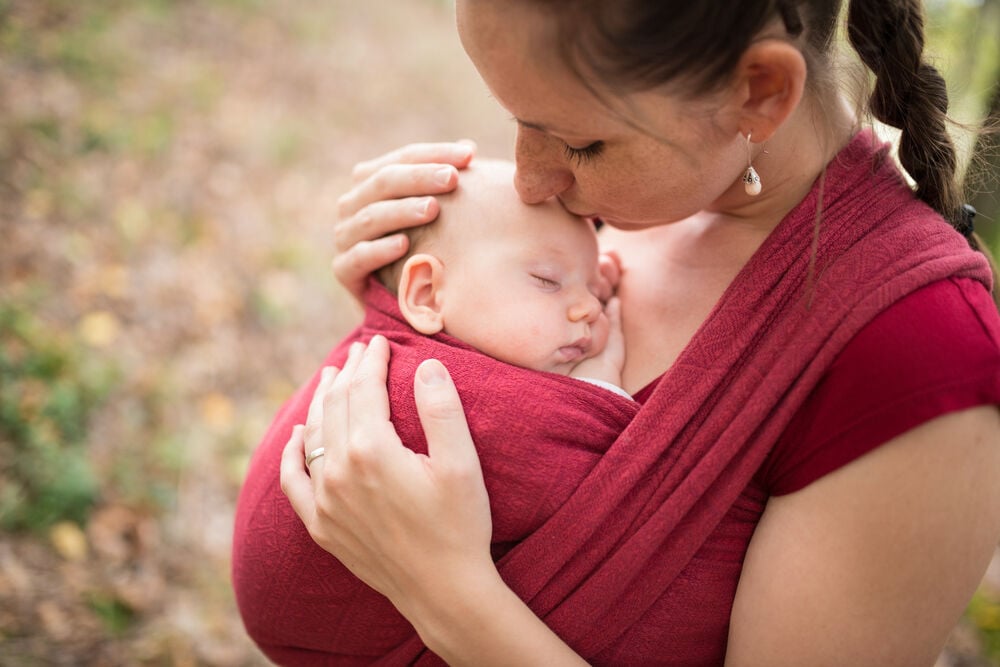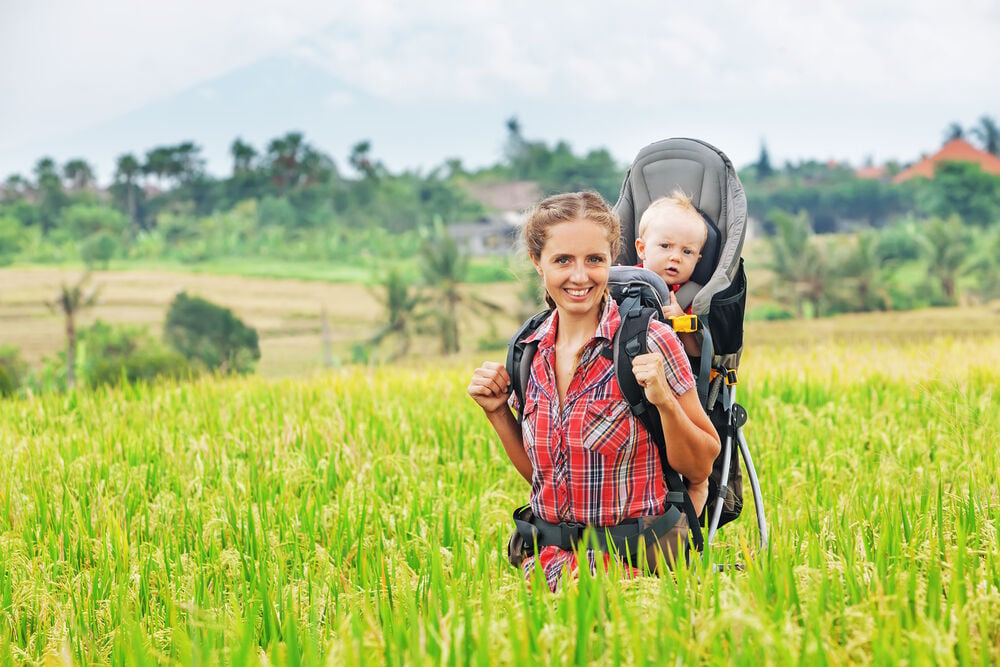-
Tracking cycle
-
Getting pregnant
-
Pregnancy
-
Help Center
-
Flo for Partners
-
Anonymous Mode
-
Flo app reviews
-
Flo Premium New
-
Secret Chats New
-
Symptom Checker New
-
Your cycle
-
Health 360°
-
Getting pregnant
-
Pregnancy
-
Being a mom
-
LGBTQ+
-
Quizzes
-
Ovulation calculator
-
hCG calculator
-
Pregnancy test calculator
-
Menstrual cycle calculator
-
Period calculator
-
Implantation calculator
-
Pregnancy weeks to months calculator
-
Pregnancy due date calculator
-
IVF and FET due date calculator
-
Due date calculator by ultrasound
-
Medical Affairs
-
Science & Research
-
Pass It On Project New
-
Privacy Portal
-
Press Center
-
Flo Accuracy
-
Careers
-
Contact Us
What You Should Know When Choosing a Baby Carrier


Every piece of content at Flo Health adheres to the highest editorial standards for language, style, and medical accuracy. To learn what we do to deliver the best health and lifestyle insights to you, check out our content review principles.
Types of baby carriers
Although car seats and strollers can transport your baby safely, baby carriers provide that feeling of closeness and simplicity. There are many types and styles of baby backpacks to choose from, and the best baby carriers fall into the following main categories: slings, wrap baby carriers, soft structured baby carriers, and baby backpack carriers.
Slings
A sling baby carrier is a single piece of fabric that goes over one shoulder, creating a pouch to hold your baby in front of you. They come with or without rings for adjustment, and may be padded or unpadded. Moms love them because of their loose fit and the privacy they can create for breastfeeding.
A sling is the best baby carrier for newborns, as it helps mothers hold their babies on the body instead of pushing them in a stroller. They have their arms free to complete daily tasks, and can stay active and keep the baby happy at the same time.
However, sling baby carriers come with a few drawbacks. All that fabric can be challenging to carry, especially for petite mothers. Mothers might also find one-shoulder support to be quite uncomfortable, especially if the baby’s weight is more more than 4.5 kg. Perhaps the most significant drawback, though, is that most slings cannot be machine washed.
All in all, slings are the ideal baby carrier if you're looking for a comfortable and lightweight method of transporting your baby. They allow more airflow than other types of baby carriers and can be customized to various carry positions.
Wrap baby carriers

Take a quiz
Find out what you can do with our Health Assistant
While a sling goes over one shoulder, a wrap is a wide piece of fabric that you wear around your body and over both shoulders. New moms often find wraps to be the best baby carriers, as they’re so versatile and easily adjusted. Just like slings, wraps are also great for breastfeeding your child discreetly and completing your daily tasks efficiently.
Wrap baby carriers are snuggly for newborn babies who can’t yet hold their heads up (usually until they are two months old) and like being held close. They offer a secure resting place for babies and are made from lightweight, soft, and supportive fabrics.
However, they do come with several downsides. One is that wraps can be time-consuming to take on and off. And just like with slings, these child backpack carriers aren’t as comfortable for carrying heavier babies. Wraps also take some practice to get used to and can be tricky. But if you get the hang of it, newborns will love them!
Flo has a great, clean, responsive interface. I love that it's simple without unnecessary options that other similar apps have. I just want to track my cycle and that's it - I need something quick and reliable, and the app offers just that. It's very accurate in predicting periods even with my erratic cycle.
Soft structured baby carriers
Soft structured baby carriers provide amazing support for babies and comfortable straps for parents. These child backpack carriers are an excellent option if you’re a fan of the flexible style of a wrap carrier, but also want more structure.
These are some of the best baby carriers for you and your child. Most of them can be worn as front carriers or back carriers. They're incredibly secure, too, as they have straps that go around your shoulders, a buckle that goes across your back, and a buckle around your waist.
While soft structured baby carriers tend to cost more than wraps or slings, they can last through multiple kids. Most importantly, they provide a lot of support and structure, so both mom and baby can stay comfortable and safe.
The only downside is that front carriers may feel too big and bulky for your newborn. What's more, they aren’t as great for breastfeeding as slings and wraps are.
Baby backpack carriers

The baby backpack carriers are similar to camping backpacks. They come with a seat for your baby that attaches to your back with a frame, and straps that go over your shoulders.
Child backpack carriers are perfect for babies who love to look around and be carried high on your shoulders. Many of these baby carriers have pouches for holding supplies, such as milk bottles and diapers. Some models even come with a built-in sunshade.
Baby backpack carriers are ideal for families who love hiking, shopping, and traveling. These multi-feature backpacks allow you to carry food, water, and other essentials while also providing a safe place for your baby to be transported.
What to consider when buying a child carrier
There are a number of different factors that you need to consider when determining which child carrier is right for you.
Price: Although wraps are affordable, other types of child carriers (like soft structured ones) can be pricey. It's important that price isn't the only factor in your decision, though. Make sure you check the carrier’s comfort, safety, and fit before making a purchase.
Comfort for you: The carrier should fit your size and body type, and allow you to carry the baby without strain.
Comfort for your baby: The ideal carrier should support your baby’s head and neck nicely. If you opt for a front carrier, make sure the leg holes are loose enough for your baby’s thighs, but not so loose that your baby slips through them.
Versatility: Look for a carrier that can accommodate your growing baby. Instead of buying a one-size carrier, consider buying one that’s adjustable.
Security: Make sure that the carrier will support your baby securely, and that all buckles and straps are durable and of high quality.
Nursing: If you’re looking for a carrier that will let you breastfeed discreetly, then slings and wraps might be the ideal choice for you.
Easy to clean: The best baby carrier will be easy to clean. Babies can get messy, so it’s better to choose a carrier that’s machine-washable.
Weather-suitable: Some types of baby carriers can be a little warm in hot weather, including wraps. If you live in an area that gets hot during the summer months, choose a carrier that’s made of lighter fabric.
Baby carrier: safety notes
Baby carriers can be beneficial for both baby and parent, but as with other baby products, it’s essential to use them with safety in mind.
- Consult with your doctor if your baby was born prematurely or has a respiratory problem
- Make sure you can see your baby's face in the carrier, and that your baby can see you as well
- Your baby shouldn’t be curled up so that their chin is forced onto your chest, as this can restrict their breathing
- Your child’s head should be as close to your chin as comfortable
- Check the baby in the carrier often, and monitor your baby’s breathing
- The carrier should provide adequate support for your baby’s developing neck and back
- Always inspect your carrier for wear or damage before use
With so many carriers to choose from, buying the best baby carrier can be a challenging task. Going to a shop that offers several styles and trying them all out to see which one you like is a good idea. In the end, you can't go wrong with a simple, versatile, and supportive carrier that will bring you and your child even closer together.


Hey, I'm Anique
I started using Flo app to track my period and ovulation because we wanted to have a baby.


The Flo app helped me learn about my body and spot ovulation signs during our conception journey.


I vividly
remember the day
that we switched
Flo into
Pregnancy Mode — it was
such a special
moment.
Real stories, real results
Learn how the Flo app became an amazing cheerleader for us on our conception journey.




